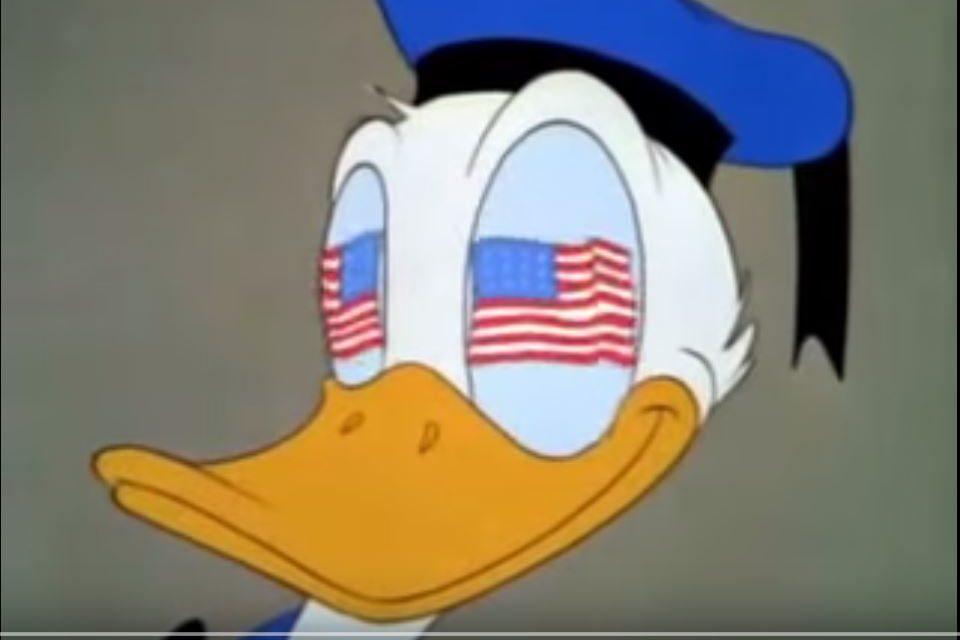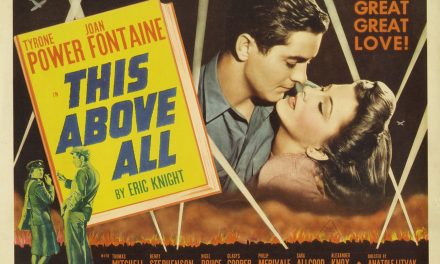Back in the 1920s, when it all started with a mouse, the last thing Mickey could have been thinking was that he would be on the front lines of battle. But Walt Disney, creator of Mickey and founder of Walt Disney Pictures, changed his plans when the US was drawn into the Second World War. Disney has shifted gears from Bambi to Navy training videos, becoming one of the most ardent supporters of the war effort in Hollywood.
Mickey Mouse (meaning Walt Disney himself and the whole Disney product) is a phenomenon that is simple on the surface, but holds a deeper meaning. Disney has said his studio has always concentrated upon the production of entertainment. He said it works for those people who are glad to enter a cinema and become young again, “to take a naive delight in the adventures of a duck with a sailor hat.”
The naive delight Disney refers to can be felt in his last full-length cartoon, Bambi. It features hardships, but at the same time themes of fantasy and hope. However, Disney says that will be his last full-length cartoon for a while, because Mickey has been drafted.
More than 80 percent of Disney’s current film output consists of government projects. This makes Disney’s cartoon production the single most ambitious part of Hollywood’s contribution to the war effort.
This all started April 1941, when Disney produced the short cartoon “Four Methods of Flush Riveting” for the Lockheed Airplane Company. Lockheed loved the light-hearted training video and showed it to Allied government officials. No one in the US took advantage of Disney, but Canada bit and requested an army training film called “Stop That Tank.” The informative and entertaining cartoon, featuring a silly-looking Hitler, explained how to use the Boys Antitank rifle (named for its British inventor, Captain H. C. Boys)—a weapon that can stop a German tank in its tracks.
Then the ball started rolling. Early this year the US Treasury Department ordered “The New Spirit,” featuring Donald Duck encouraging people to pay their taxes. The messaging was effective. According to a government-sponsored survey after the film, about 37 percent of the audience said they felt more ready to pay.

Donald Duck in a still from the Walt Disney cartoon “The New Spirit” (1942).
Now comes the storm of Disney cartoons made to teach fire-fighting, riveting, and a multitude of diverse and technical subjects. The US Navy has commissioned 20 such films, and other departments are following suit.
Disney’s 550 employees are working harder than ever. Six major government agencies have engaged Disney to reach the public by way of its familiar cartoon characters. And the artists are devoted to the mission. Before making an aviation training film for the US Navy, the artists learned to fly, to ensure that it would be realistic.
Working for government agencies does not stop Disney from being creative. Disney created the animated film “Food Will Win the War” for the Department of Agriculture to drive home the immensity of U.S. food resources. The artists had fun with their imagery. The film features a fat American lady squashing Berlin while eating and shows that the US has enough spaghetti to be knitted into a sweater covering the whole earth.
Tackling tough issues with humor has become a trademark of the Disney corporation’s war work. Walt Disney said if there is one thing that he has learned about soldiers, it’s that along with all of the grit and courage required to fight, a sense of humor usually follows. Those from the Northeast have a dry wit, Southerners are more generally amiable, and Westerners show an extravagant sense of humor. Disney combined these and made an American humor.
Some of Disney’s most humorous works come in the form of logos he design for the government and the military. When Disney made a logo for the Alaska Defense Forces that featured a seal balancing the letters ADF on his nose, he received a letter from Commander General S. B. Buckner. Buckner wrote with the same tongue in cheek humor: “Since the arrival of the insigne all the seals in the Bering Sea have been out on the ice pack balancing D’s on their noses, sneering at polar bears and expanding their chests.”
Disney has produced about 500 of these insignia for the Armed Forces of the United States alone. Requests for emblems grew so numerous that the studio once had five men drawing them. Disney footed the bill for their time, $100 to $500 a week for two years, but has reserved rights over commercial reproduction of the designs.
Now the War Department has given its official sanction for logos decorating planes, tanks and jeeps, as well as those worn by troops. Disney made a red-eyed alligator for the Army’s Amphibious Command. The Fighting French in Africa have taken a giraffe with earphones and a lion on a bicycle. Other patrons have been the Royal Air Forces of Britain and Canada and the American Flying Tigers in China.
Disney is an avid war supporter on a personal level too. Two iron deer statues on his front lawn in Hollywood have been donated for scrap metal. The deer, which weigh a ton, contain enough scrap for 10,000 incendiary bombs. In addition, he only charges the government $12 a foot for the films ordered, as opposed to the $65 a foot at which his commercial short subjects are budgeted. Disney makes no profit on the government pictures.
Walt Disney says the cartoon medium he is still perfecting is greater than himself. His office walls are covered with sketches of ideas tacked to storyboards—symbols of a limitless future. It all started with a mouse, and since then the mouse has not stood still. From feature-length cartoons to war training videos, Disney will keep trying new things to meet the challenges of wartime. However, once the war is over, Disney’s feature-length cartoon “Peter Pan” may be taken off the back burner. Much as Disney and his company support the war effort, these suppliers of “naive delight” surely yearn for a return to peace following an Allied victory.
Sources:
Donald goes to war. (1942, Sep 07). The Irish Times (1921-Current File) Retrieved from https://search.proquest.com/docview/523224813?accountid=13793
Disney’s troupe goes to war. (1942, Nov 15). New York Times (1923-Current File) Retrieved from https://search.proquest.com/docview/106359736?accountid=13793
Special to THE NEW,YORK TIMES. (1942, Sep 07). Disney supplies heraldry of war; some emblems in pacific battles. New York Times (1923-Current File) Retrieved from https://search.proquest.com/docview/106345377?accountid=13793
Disney’s iron deer become scrap. (1942, Aug 11). New York Times (1923-Current File) Retrieved from https://search.proquest.com/docview/106342822?accountid=13793
By, T. F. (1942, Jun 21). DONALD DOESN’T DUCK THE ISSUE. New York Times (1923-Current File) Retrieved from https://search.proquest.com/docview/106399261?accountid=13793





